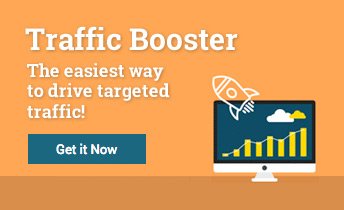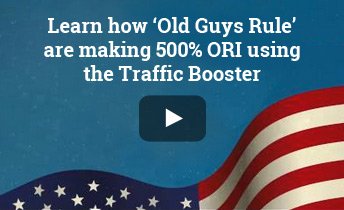What Do I Need to Know About Google Ads?
Google Ads remains one of the most powerful digital advertising platforms for eCommerce businesses and small-to-medium businesses (SMBs). It allows advertisers to bid on keywords and display targeted ads across Google’s search results, Display Network, Shopping Network, YouTube, and more.
In 2025, Google Ads has introduced advanced AI-driven automation, new campaign types, and better audience targeting tools to help businesses maximize their return on ad spend (ROAS). This guide will help SMBs and eCommerce store owners understand how to leverage Google Ads effectively.
Why Google Ads is Crucial for eCommerce and SMBs
Google Ads offers multiple benefits for small businesses and online stores:
- Massive Reach – With billions of searches every day, Google Ads connects you with potential customers actively searching for products.
- Scalability – Start small and scale your budget based on performance.
- Targeted Advertising – Reach users based on location, interests, demographics, and search intent.
- Immediate Results – Unlike SEO, Google Ads delivers instant traffic and sales.
- Flexible Budgets – Set daily budgets and adjust bids to maintain cost efficiency. Performance Tracking – Get real-time insights into ad effectiveness and customer behavior.
Key Google Ads Updates for 2025
1. Performance Max Campaigns
Performance Max campaigns leverage AI to optimize ads across all Google platforms, including Search, YouTube, Display, and Shopping. They allow SMBs and eCommerce stores to automate targeting, bidding, and creative assets to maximize conversions.
2. Demand Gen Campaigns
Designed to help brands create demand and nurture leads, Demand Gen campaigns run across YouTube Shorts, Discover, and Gmail to reach potential customers through engaging visual ads.
3. AI-Powered Ad Creation & Optimization
Google Ads now includes AI-generated ad copy, image suggestions, and dynamic audience targeting to improve performance for businesses with limited resources.4. Improved First-Party Data Targeting
With new privacy regulations, first-party data (such as customer email lists and website visitors) has become more critical for targeting high-intent buyers.
5. Smart Bidding Enhancements
Google’s automated bidding now incorporates more real-time signals, such as device type, time of day, and user behavior, to optimize bids dynamically.
Google Ads Terms You Need to Know
Ad Extensions
Ad Extensions provide additional information alongside your ad, such as phone numbers, promotions, offers, and additional links.
Ad Groups
Ad Groups contain your targeting, budget, and keywords. For example, an online shoe store may have Ad Groups for men’s shoes, women’s shoes, and online promotions, each containing multiple ads.
Ad Rank
Ad Rank determines where your ad appears on a page. It’s based on your Quality Score and bid amount.
Bid Strategy
Your Bid Strategy defines how you pay for interactions, whether through clicks, impressions, or conversions.
Billing Threshold
Billing Threshold applies to automatic payments and determines when you will be charged for ad costs, starting at $50 and increasing incrementally as you spend more over time.
Call to Action (CTA)
The CTA encourages shoppers to take action, such as "Buy Now," "Get Deal," or "Shop Today."
Campaign & Campaign Type
A Google Ads campaign consists of multiple Ad Groups with shared budgets and settings. Campaign types include:
- Search Network: Ads appear in Google search results.
- Display Network: Ads appear on websites, videos, and YouTube.
- Shopping: Product listing ads for eCommerce stores linked to Google Merchant Center.
- Performance Max: AI-driven, automated campaign type leveraging multiple Google networks.
Click-Through Rate (CTR)
CTR measures how many people click on your ad after seeing it. A higher CTR indicates a more effective ad.
Cost-Per-Click (CPC)
CPC is the amount you pay for each click. Advertisers can set a maximum CPC bid.
Daily Budget
The daily budget sets the maximum amount you are willing to spend per day on a campaign.
Destination URL
This is the landing page URL where shoppers are directed after clicking your ad.
Quality Score
Quality Score measures ad relevance and impacts your Ad Rank. It considers keyword relevance, landing page quality, and CTR.
Optimization
Optimization involves making data-driven adjustments to improve ad performance, including refining keywords, ad copy, and targeting settings.
Google Ads Campaign Types for eCommerce & SMBs
Search Ads
- Best for: Driving high-intent traffic to product pages.
- Example: A Shopify store selling sneakers can bid on “buy running shoes online” to appear at the top of Google search results.
Shopping Ads
- Best for: eCommerce businesses using Google Merchant Center.
- Example: A small boutique can showcase product listings with images, pricing, and reviews.
Display Ads
- Best for: Retargeting and brand awareness.
- Example: A small clothing brand can display banner ads to users who visited their website but didn’t make a purchase.
YouTube Video Ads
- Best for: Brand storytelling and product demonstrations.
- Example: A small beauty brand can run video ads showing product tutorials to potential buyers.
Performance Max
- Best for: Automating ad placements across Google’s entire network.
- Example: A subscription box service can use AI to optimize their ad placements and budget allocation.
Local Services Ads
- Best for: Brick-and-mortar businesses targeting local customers.
- Example: A small bakery can run ads for “best bakery near me” to attract foot traffic.
Google Ads Bidding Strategies for SMBs
- Maximize Clicks– Best for increasing traffic on a limited budget.
- Maximize Conversions– Uses AI to focus on users most likely to convert.
- Target ROAS (Return on Ad Spend)– Ideal for eCommerce businesses to optimize profits.
- Target CPA (Cost Per Acquisition)– Ensures you only pay for actual customer conversions.
Google Ads Optimization Tips for SMBs & eCommerce
1. Leverage High-Intent Keywords
Focus on transactional keywords that indicate buying intent (e.g., “buy running shoes online” instead of “best running shoes”).
2. Use Negative Keywords
Filter out irrelevant traffic to avoid wasted ad spend (e.g., exclude “free” if you don’t offer free products).
3. Optimize Product Feeds for Shopping Ads
Ensure your Google Merchant Center feed has:
- High-quality images
- Competitive pricing
- Keyword-optimized product titles and descriptions
- Accurate stock availability
4. Implement Retargeting
Use Display and YouTube ads to re-engage users who visited your site but didn’t convert.
5. Test & Improve Ad Copy
Run A/B tests with different headlines, descriptions, and calls to action (CTAs) to find the highest-performing version.
6. Mobile Optimization is Critical
Ensure your landing pages load fast and are mobile-friendly since a majority of Google search traffic comes from mobile users.
7. Track & Adjust Based on Data
Monitor key performance indicators (KPIs) such as:
- Click-through rate (CTR)
- Conversion rate
- Cost-per-click (CPC)
- Return on ad spend (ROAS)
Use Google Analytics and Google Ads reports to adjust bids, targeting, and ad creatives based on what’s working.
Challenges of Google Ads for SMBs
- High Competition: Big brands with larger budgets can dominate the bidding landscape.
- Cost Per Click (CPC) Inflation: Popular keywords are becoming more expensive.
- Steep Learning Curve: Managing and optimizing campaigns requires continuous learning.
- Ad Fatigue: Users may ignore repetitive ads, requiring fresh creatives.
Future Trends in Google Ads for eCommerce & SMBs
1. AI-Driven Campaigns
Google is investing heavily in automation, making it essential for SMBs to leverage AI tools to remain competitive.
2. Expansion of Native Ads in AI Search Overviews
Google’s AI-powered search results will begin incorporating native ads, providing new advertising opportunities.
3. Voice Search & Conversational Commerce
With the rise of voice search, optimizing ads for spoken queries (e.g., “where can I buy organic coffee near me?”) will become important.
4. Interactive Shopping Experiences
Google Shopping and YouTube will introduce more immersive shopping experiences, including AR (augmented reality) product previews.
5. Greater Emphasis on Sustainability & Ethical Shopping
Google is favoring brands that emphasize eco-friendliness and ethical sourcing in their advertising.
Final Thoughts
Google Ads remains one of the most powerful marketing tools for SMBs and eCommerce businesses. By leveraging AI automation, optimizing campaigns, and focusing on data-driven decision-making, small businesses can achieve strong ROAS and sustainable growth.
If managing Google Ads feels overwhelming, consider using AI-driven tools like Traffic Booster to automate bidding and optimize ad performance for better results with lower ad spend.

